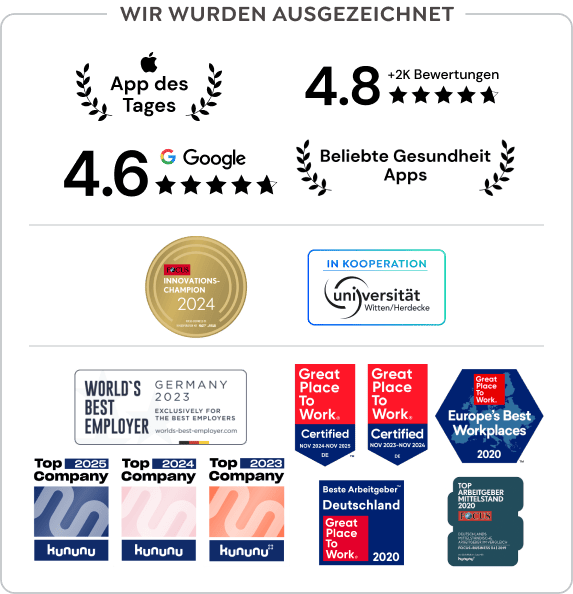| Refresh | This website greator.com/en/new-work-2/ is currently offline. Cloudflare's Always Online™ shows a snapshot of this web page from the Internet Archive's Wayback Machine. To check for the live version, click Refresh. |

Under the designation New Work (The term "new work" is used to describe a range of different modern working methods that focus on the needs of employees. In specialist circles, there is also talk of the working methods of the future. In the following article, we will take a closer look at the most popular new work methods.
The world of work has changed enormously in recent decades: Just think of the technical progress. Growing globalization also plays a decisive role in many companies. Nowadays, professional activity for a company is no longer necessarily location-dependent. It is self-explanatory that work processes must be regularly adapted to the new opportunities.
However, not only the external circumstances have changed, but also the people themselves. While a strict hierarchy used to prevail in most companies, many employees (and bosses) now want an atmosphere of friendly equality. All New Work methods are designed to realize this goal.
New Work offers employees the opportunity for self-realization. According to the New Work concept, employees should be regarded and treated as free, adult individuals. This includes that they are trusted with their own responsibility. The symbol of the grumpy boss looking over one's shoulder and threatening with sanctions should thus be a thing of the past.
The fundamental values of New Work methods include:
The social philosopher Frithjof Bergmann, who has New Work concept developed in the 1980s, wanted to put an end to the bondage of wage labour. Although this may be a little drastic, the description is quite apt.
Bergmann was of the opinion that a productive working is best achieved at eye level. For the employee, the job should at best be a means of self-realization.
Let's take a closer look at the values mentioned above:
Self-employment in the context of New Work means that the employee is allowed and expected to take the initiative for his or her own career as well as for the success of the company. Passive employees who mutely follow instructions from above contradict the New Work concept. Also Personal responsibility is one of them. The latter can be achieved, for example, by flexible Implement working hours and variable working conditions.
The factor Freedom includes, for example, the New Work methods Freelancing, co-working or work-life blending. The aim is to create a better balance between job, free time and family. This makes it easier for employees to plan their lives. With the help of New Work, the right working model can be found for every life situation.
Working together as a team is particularly important. In the context of New Work, the entire company sees itself as one big team - from the unskilled worker to the executive floor. Classic hierarchies no longer exist. Instead, management takes place at eye level. This includes, for example, an appreciative error culture. Instead of threatening with sanctions, problems are addressed openly and discussed objectively.

As mentioned in the introduction, New Work is a generic term for numerous modern working methods in our digitalized and globalized world. Now we want to introduce you to the most popular New Work methods.
Keep in mind, however, that not all concepts can be implemented in every company. It should be looked at individually for each company to see which methods are purposeful. Keyword: change management
The term Work-life balance will tell you something for sure. From Work-Life Blending not everyone has heard of it. While work-life balance strives for a strict separation of leisure and work, work-life blending blurs these boundaries. According to proponents of New Work methods, this makes it possible to work more productively and flexibly.
Specifically, this means: You would be allowed to browse the Internet or make private phone calls during working hours, but in return you would have to be prepared to answer work-related e-mails and calls after hours. Work-life blending also includes offers such as sports and leisure activities in the company as well as location-independent working (e.g. home office).
At agile working is understood to mean all working methods that are based on the self-organisation of employees. Characteristic is the abolition of the old hierarchical structures. With the help of short iterations (repetition of work processes until they work), each employee can devote himself to his respective tasks in a concentrated and solution-oriented manner.
At agile methods often use instruments such as the Kanban board or Scrum for use. Every employee should and may make suggestions for improvement, e.g. concerning the organisation or even the target image. It is crucial that the suggestions are listened to and discussed, even if they cannot be implemented in the end.
The cornerstones of agility:
Examples of agile methods:
Job sharing is one of the most newfangled and at the same time most popular new work methods. Basically, it is a new interpretation of part-time work, which brings various advantages for both employees and employers. As the term suggests, job sharing involves at least two employees sharing a full-time position.
Example: The company has a full-time position to be filled with 40 hours of work per week. This could be shared between two employees, each working 20 hours per week. However, it would also be possible for one of them to work 15 hours and the other 25 hours. In some cases, even three or four employees share a full-time position.
Job sharing is a worthwhile option, especially for employees with families. But even if you want to study on the side, for example, it can make sense to share a full-time position. In summary, job sharing allows employees greater flexibility in their lives. In return, the company benefits from double the expertise for just one position.
Holocracy is one of the most costly and at the same time most effective New Work methods, as it requires a complete restructuring of the company. Here, a strong involvement of the employees is desired. Hierarchical structures no longer exist in holacracy. Put simply, each employee assumes a leadership role in his or her respective department.
You are probably familiar with the pyramid picture that shows the responsibilities in hierarchically managed companies. In holocracy, this pyramid is replaced by a circular model.
The smallest circle symbolises the role of the individual employee, which in turn is assigned to other areas of responsibility. These are represented by slightly larger circles. All employees who belong to a circle may participate in all decision-making processes that affect their area of responsibility (circle).
The four pillars of holocracy are:
Example:
The WordPress hosting service provider Raidboxes from Münster (Westphalia) has been practicing holacracy successfully since 2016. With this New Work measure, the company's managers wanted to achieve the following Achieve goals:
After several years, the company publicly announced that the Holocracy project had succeeded and that the goals set had actually been achieved in a sustainable manner.
The individuality of the employee is at the forefront of all New Work methods. Jobcrafting refers to the active design of one's own work tasks. In the past, many employees fulfilled their job strictly according to the job description. Jobcrafting, however, is about shaping the job with one's own ideas, Needs and personal expertise.
Of course, the Corporate Goal should not be completely disregarded. The employee should therefore have internalized the most important principles of entrepreneurially sensible trading. Self-confidence and commitment are also among the basic requirements for successful jobcrafting. Ideally, jobcrafting goes hand in hand with a high level of intrinsic motivation here.
Jobcrafting examples:
A tiler sets up self-initiated re-set the warehouse so that it is clearer.
An accountant who enjoys writing and photography in her spare time keeps a blog for the company.
An IT specialist not only solves the technical problems, but also trains his colleagues so that they can solve minor technical difficulties themselves in the future.
Most people want feedback on the work they have done. If you are employed by a company, you have probably had one or two appraisal interviews with your supervisor. The usual procedure is not perceived as pleasant by all employees. In the worst case, the employee feels like a naughty pupil who is being made aware of his shortcomings.
peer feedback is one of the New Work methods and replaces the classic appraisal interview. The special feature: it takes place from colleague to colleague. In many cases, employees can even choose their own feedback partner. However, it is important to pay attention to constructive criticism to lay the groundwork. It will do you little good if your colleague praises you just for the sake of peace.
Example:
Two colleagues of equal rank agree to give each other feedback every six months. It is determined in advance which areas the other should pay particular attention to.
The positive error culture is often emphasized among New Work methods, although it is not always easy to implement in practice. Mistakes are annoying, there's no denying that. In the worst case, the company may even suffer financial damage. However, no one is helped by hushing up a faux pas or exposing the person responsible.
Instead, the error is analyzed: What information was missing from the person responsible? How can a similar error be avoided in the future? The error analysis always takes place at eye level. There are no accusations or recriminations on either side. The employee as a person is never criticized. The focus is solely and exclusively on the error.
A positive error culture also includes a certain, albeit calculated, willingness to take risks. If the company is in the process of being restructured, mistakes are bound to happen. This to accept is an important step toward an appreciative working atmosphere.

New Work offers employees the opportunity for self-fulfillment. Is this also an issue for you? Then you can help yourself with the help of our Greator Business Coach Training acquire the basic knowledge and the necessary skills. This applies regardless of whether you are a manager and want to establish the New Work methods in your company or whether you want to work later as an independent coach.
100 % of the training takes place online, so that you can easily integrate the learning content into your everyday life. You will receive two high-quality learning videos every week, in which we familiarize you step by step with all methods and topics in the field of business coaching. Your digital workbook helps you to deepen the content you have learned.
Are you sure you understand everything? You can check this with the help of weekly tests. Modules 7, 8 and 9 are of particular importance. In the seventh module you learn how to motivate other people. This is very important in the field of New Work. Modules 8 and 9 are dedicated to your personal issues: What old patterns from the past are holding you back? How do you become successful as a coach?
Have we aroused your curiosity? Then apply today without any obligation for our high quality Business Coach Training.



